Composite sinks have become increasingly popular in recent years due to their durability and attractive design. Unlike traditional stainless steel or porcelain sinks, composite sinks are made from a combination of materials such as quartz, granite, and acrylic resins. This makes them resistant to scratches, stains, and heat.
Although composite sinks are low maintenance compared to other types of sinks, they still require proper care to keep them looking their best. In this guide, we will discuss how to care for composite sinks and ensure they last a lifetime.
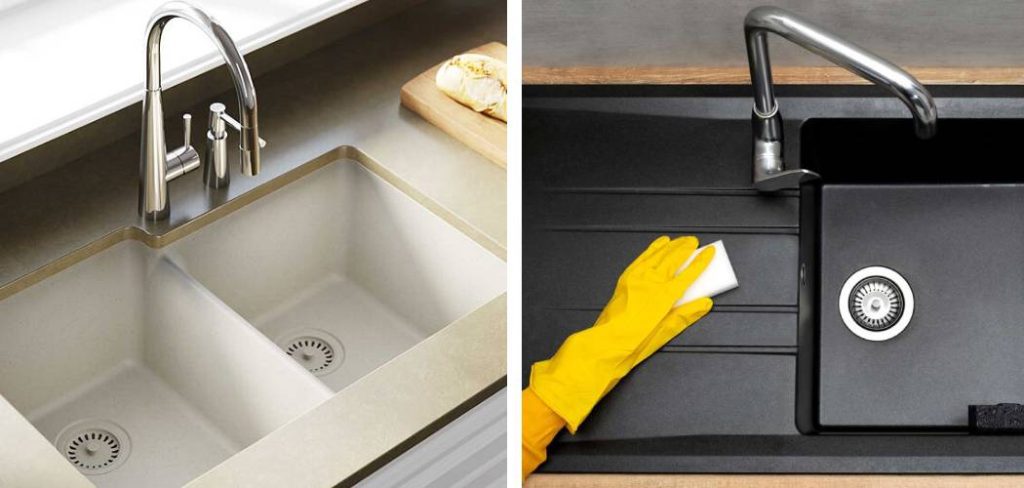
What Cleaning Products Should Be Avoided When Cleaning Composite Sinks?
When it comes to cleaning composite sinks, it is important to avoid harsh chemicals and abrasive cleaners. These can damage the surface of the sink and cause permanent scratches or discoloration.
Avoid using bleach, ammonia, or products with high levels of acid as they can dull the finish of your composite sink. Instead, opt for mild dish soap or a specialized composite sink cleaner. These gentle cleaners are designed specifically for composite sinks and will not harm the surface.
10 Essential Tips How to Care for Composite Sinks
Composite sinks have gained popularity thanks to their durability and attractive color options. Whether you have a quartz composite or granite composite sink, proper care and maintenance can keep your kitchen looking its best for years to come. Here’s how to ensure your composite sink remains a gem in your household.
1. Regular Cleaning Routinely
It’s imperative to clean your composite sink after each use to prevent the buildup of stains and water spots. Use a mild dish soap and a soft cloth or sponge. Avoid abrasive materials that can scratch the surface. For tougher spots, make a paste of baking soda and water, apply it to the area, and let it sit for a few minutes before scrubbing gently with a non-scratch pad. Rinse well with warm water after cleaning to remove any residual cleaner or paste that may be left behind.
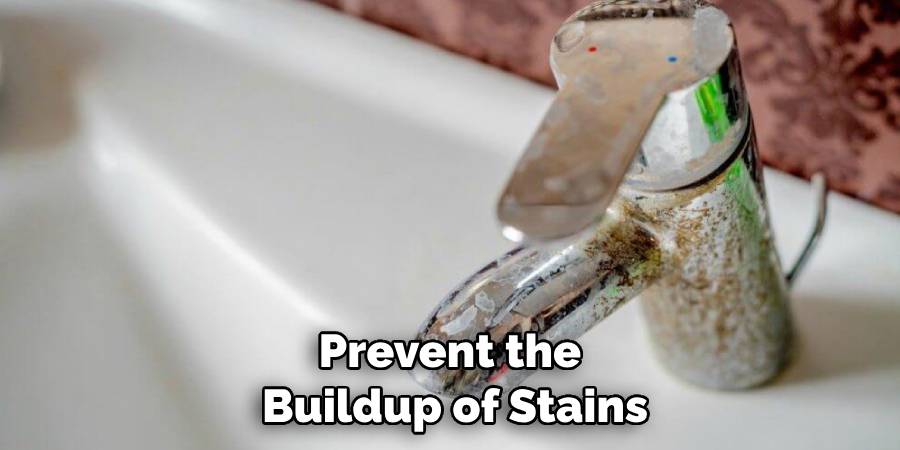
2. Say No to Harsh Chemicals
While it’s tempting to rely on strong chemicals to tackle grime, these can be harmful to the sink’s finish. Chemicals like bleach and ammonia can cause discoloration or weaken the composite material over time. Opt for gentle cleaning solutions that won’t compromise the integrity of your sink. For daily maintenance, consider pH-neutral cleaning agents; these non-abrasive cleaners will effortlessly remove most grime without leaving a damaging residue. If you encounter stubborn stains, a solution of vinegar and water can often do the trick – just be sure to rinse thoroughly with water afterward.
3. Prevent Hard Water Buildup
Composite sinks, like their stainless counterparts, can fall victim to hard water build-up. To avoid this, wipe the sink dry after each use. Standing water contains minerals that can leave marks on your sink as it evaporates. A quick wipe-down will maintain the sink’s luster and prevent the need for harsher cleaning later on. If you live in an area with particularly hard water, you might also consider using a water softener or periodically applying a cleaner designed to remove lime scale. This proactive approach not only preserves the pristine condition of your sink but also extends its longevity, ensuring that it remains an elegant and functional fixture in your kitchen.

4. Protect Against Scratches
While composite sinks are highly resistant to scratches, they aren’t scratch-proof. Be mindful of what you’re placing in the basin—do not drop heavy cookware or sharp utensils directly onto the sink’s surface. Sink grids or mats are a great way to add a layer of protection and can also prevent chips along the edges of the basin. These accessories act as a cushion and provide a stable platform for your dishes and utensils, minimizing the likelihood of accidental damage. Regularly inspect and clean your sink accessories to ensure they don’t harbor food particles or bacteria, which could compromise the hygienic environment of your kitchen.
5. Rinse Thoroughly
No one wants soap residue in their composite sink, as it leaves it looking dull and can potentially cause a build-up over time. Always ensure that you rinse the sink thoroughly after cleaning to retain its shine and polish. A clean microfiber cloth can help dry the sink and prevent water spots. Use it to buff the surface gently until it’s completely dry. This not only gives the sink a gleaming finish but also helps in maintaining a surface that’s less conducive to bacterial growth. A well-maintained composite sink not only enhances the overall aesthetics of your kitchen but also contributes to a cleaner and more sanitary food preparation area.
6. Regularly Address Stains
Stains happen, but they don’t have to be permanent. For organic stains like coffee or tea, a quick rub with a lemon or white vinegar can often lift the mark. For oily or greasy stains that inevitably occur over time, reaching for a degreasing dish soap can be particularly effective. Apply the soap directly to the affected area and gently scrub with a non-abrasive pad or brush. Rinse immediately with warm water to prevent soap residue. The key is to tackle these stains promptly; the sooner a stain is addressed, the better the chances of completely eradicating it without residual marks, ensuring your sink remains pristine.
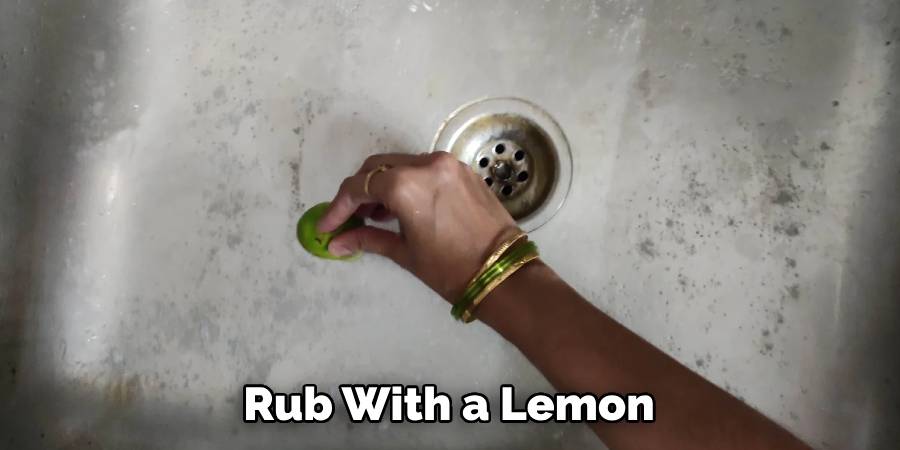
7. Maintain the Drain
The drain of your composite sink is often overlooked but important to the overall health of your sink’s appearance. Regularly cleaning the drain can prevent odors and make sure clogs don’t mar the basin. A mixture of baking soda, vinegar, and hot water can be poured down the drain once a week to keep it fresh and flowing freely. This combination works as a natural cleaning agent and can help dissolve any lurking food particles or build-up.
Pour a half-cup of baking soda followed by a half-cup of vinegar into the drain, and let it fizz and sit for approximately ten minutes. Then, flush the drain with boiling water, being cautious to protect your hands and face from any steam. This routine maintenance not only prevents unpleasant smells but also extends the longevity of your composite sink’s drainage system.
8. Polish to Perfection
Every few weeks, give your composite sink a light polish to keep it looking as good as new. There are specific composite sink polishes available, or you can use baby oil or mineral oil to buff the surface, restore its sheen, and add a layer of protection against future stains. Apply a few drops of the oil onto a soft, lint-free cloth and rub it in using circular motions. After polishing, use another clean, dry cloth to buff away any excess, leaving behind a protective layer that helps repel water and prevent stains from setting in. This simple step will ensure your sink maintains its luster and continues to resist the wear and tear of daily use.
9. Be Mindful of Temperature
While composite sinks can withstand high temperatures, it’s best to avoid subjecting them to extreme heat or sudden changes in temperature. Placing hot pots directly from the stove or pouring boiling water into the sink without precaution can result in thermal shock, potentially leading to unsightly cracks. To safeguard against this, always run a stream of cold water in the sink before and during the draining of boiling liquids. This can help to moderate the temperature and minimize the risk of damaging your composite sink. It’s a simple habit that can have a significant impact on maintaining the integrity of the basin.
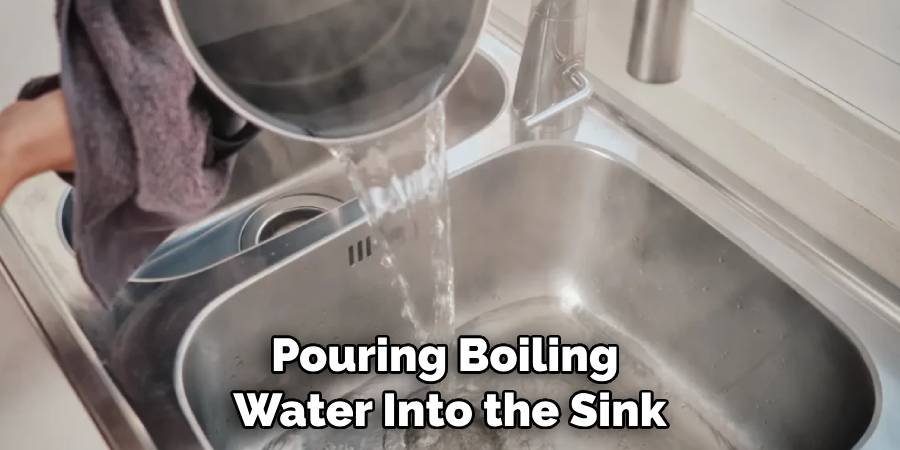
10. Routine Check for Damage
Lastly, take a few moments every month to inspect your composite sink for any signs of damage, such as cracks or chips. If you do spot something, address it immediately to prevent the problem from worsening. Small issues are much easier to fix than those that have been left to deteriorate.
By following these ten tips, you’ll ensure your composite sink remains a beautiful and functional feature of your kitchen. Regular and gentle maintenance is the key to preserving the quality and aesthetics of a composite sink, leaving you to enjoy a well-maintained kitchen environment.
Frequently Asked Questions
How Do You Condition a Composite Sink?
Preserving the sleek sophistication of a composite sink is a worthwhile endeavor that hinges on regular conditioning. These sinks, crafted from a blend of natural stone and resins, not only embody a seamless integration of durability and design but also demand attentiveness to maintain their pristine condition. Begin by gently cleaning your sink with a mild detergent to remove any debris or stains.
Then, reverently apply a mineral oil to the surface; this acts as a nourishing balm that reinvigorates and restores its lustrous sheen. A composite sink, when pampered with such dedicated care, doesn’t just serve as a mere utility—it transforms into a cornerstone of your kitchen’s aesthetic charm. Adopt these essential tips on how to care for composite sinks and watch as your basin becomes a testament to timeless elegance.
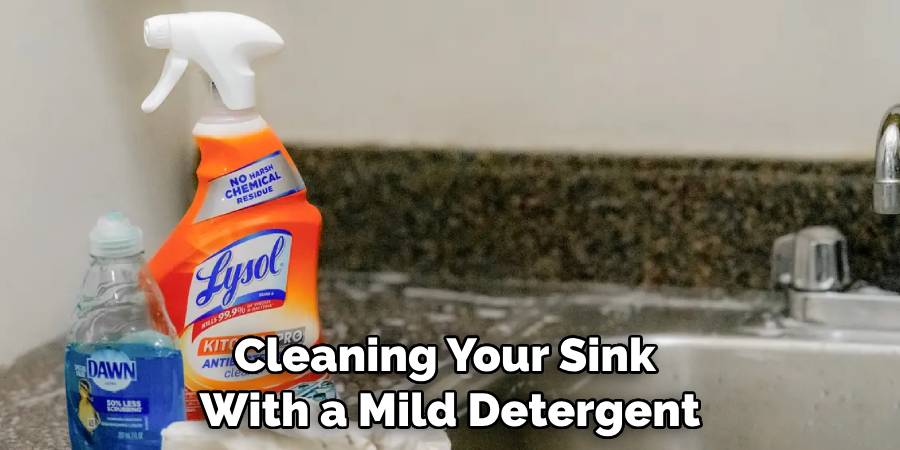
Do Composite Sinks Scratch Easily?
Composite sinks are generally resistant to scratches and stains, but they can still be damaged by sharp or heavy objects. To prevent scratching, it’s best to avoid using metal scouring pads or abrasive cleaners on the sink surface. Instead, use a soft cloth and non-abrasive cleaner to gently clean the sink.
Can You Pour Boiling Water in a Composite Sink?
Yes, you can pour boiling water in a composite sink, but it’s important to take precautions to prevent thermal shock. Always run cold water in the sink before and during the draining of boiling liquids to moderate the temperature and protect against cracks.
Conclusion
In this guide, we’ve covered several tips and tricks for how to care for composite sinks. From regular cleaning to avoiding extreme temperatures, these simple practices can help prolong the life of your sink and keep it looking its best. By taking proper care of your composite sink, you’ll not only save money on potential repairs or replacements but also ensure that your kitchen remains a welcoming and functional space for years to come. So next time you’re using your composite sink, remember these tips and make them a part of your routine maintenance schedule. Your sink will thank you! So why wait? Start implementing these easy practices today and enjoy a beautiful, long-lasting composite sink in your kitchen
